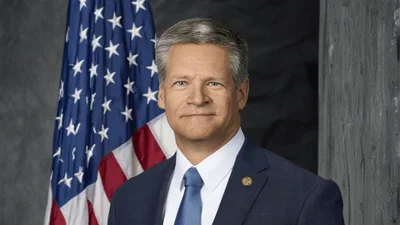Good morning. Thank you, Tom, for those welcoming remarks. I want to thank the IIJ for convening us to discuss this critical counterterrorism challenge. The CT Bureau is grateful for the IIJ’s support as a leading center for counterterrorism capacity building, particularly through initiatives to address returning foreign terrorist fighters, juvenile justice, and battlefield evidence collection.
I also want to thank Shiraz Maher of the International Centre for the Study of Radicalisation at Kings College London and Charles Lister of the Middle East Institute. Shiraz and Charles held conferences earlier this year on the complex challenges of detained ISIS fighters and displaced persons in northeast Syria and are a big reason why we are all gathered here today.
I also want to thank my State Department colleagues, some of whom are here today and whose commitment and smart thinking is helping us move forward and make progress.
Finally, I want to thank all of you for your work on this issue. Welcome everyone and thank you for coming.
As Tom said, my name is Ian Moss, and I am a Deputy Coordinator for Counterterrorism at the U.S. Department of State. My role at State focuses on terrorist detentions and countering violent extremism. That means me and my State Department colleagues will be key points of contact for all of you working on one of the world’s most complex security and humanitarian challenges. We are here to renew our commitment to partnering with you to make progress.
Before I talk about our efforts, I would like to frame my remarks around this fact: we cannot ignore the serious concerns posed by the detainee and displaced person populations in northeast Syria, because those concerns will not ignore us.
Here is a picture of what we are concerned about: In northeast Syria today, about 10,000 ISIS fighters are in SDF detention, including 5,000 Syrians, 3,000 Iraqis, and 2,000 ISIS fighters from outside Syria and Iraq. This is the single largest concentration of terrorist fighters in the world.
Half of these fighters are in purpose-built detention facilities, while the other half are held in about two-dozen makeshift facilities. These include repurposed schools and community centers. Hundreds of those detained are under the age of 18.
In addition, there are nearly 56,000 displaced persons, including family members of ISIS fighters, in al-Hol and al-Roj camps. Approximately 28,000 are Iraqi nationals, and more than 18,000 Syrians remain in al-Hol. Finally, about 10,000 are from approximately 60 countries outside Syria and Iraq. Compounding the humanitarian challenge, half of all camp residents are children under the age of 12.
This is a security and humanitarian crisis that is worsening by the day. The detention facilities are key ISIS targets, and the displaced persons camps are highly insecure. A recent security operation in al-Hol, for example, found four women chained in tunnels with signs of having been tortured by ISIS.
Most of you already know all of this. Further, I believe many of you return to your home offices from meetings like this with a message you have delivered before: this issue is important, we cannot ignore it, and we should step up and do more to address the situation before conditions deteriorate further.
I also believe that many of you already know what you are going to hear from your publics and your leadership when you deliver that message: ‘yes, we have nationals in northeast Syria. But they did bad things in a land far away and the further away they are from us, the better.’
I understand that point of view and the predicament you are in. The United States maintains that the only durable solution to the challenge we face in northeast Syria is for each country to repatriate, rehabilitate, reintegrate, and, where appropriate, prosecute their nationals. But while we share that conclusion with conviction, we understand that this approach is not flawless and not without real challenges.
We understand full well, for example, that historically many terrorist movements emerged after individuals returned home from foreign wars. Next month I will be going to Tunisia to understand their repatriation concerns better, and hope to speak with you today and tomorrow about potentially similar visits to your countries. From Tunisia’s history, we understand a part of why many Tunisians went to fight in Syria was because a small number of Tunisians, many of whom met in prison, had fought in Iraq in the 2000s or in Afghanistan before that, and were active in recruiting based on their status as veterans of those conflicts.
I understand that many of you have similar concerns or even similar histories. That is most likely why, at least partly, many of your governments are reluctant to act as decisively as you may want them to to address these issues. I believe we can acknowledge those concerns and, at the same time, identify areas where progress can be made.
In the remainder of my time, I want to reflect on our opportunity today and tomorrow to develop a collective voice that can answer the legitimate concerns our publics and policymakers have regarding bringing nationals home. To do that, let me talk about what the State Department has in mind for next steps on this issue, so that when we leave here we have a common understanding about what comes next.
Most important, we have re-energized State Department leadership to help us address the challenges in northeast Syria. This is not only because we see a worsening humanitarian and security crisis, but also because we believe there is an opportunity to re-engage on this issue diplomatically now two and a half years on from the start of the COVID-19 pandemic.
We hope to capitalize on our leadership’s attention to accomplish two things:
First, we reorganized our bureaucracy to be better positioned to tackle some of the hardest issues associated with repatriations. The CT Bureau will oversee a new interagency al-Hol Working Group to improve coordination of U.S. efforts to address the security and humanitarian situation in northeast Syria. This group will work closely with other multilateral efforts, such as the D-ISIS Coalition, the United Nations, and the ICRC. On day two of this conference, representatives from each of those entities will help connect our discussions to their efforts.
Second, we are hoping to capitalize on senior-level engagement to advance an ambitious diplomatic engagement agenda in the coming months. Here, we will speak about all dimensions of the repatriation challenge while having present countries who together represent a large proportion of the non-Syrian and non-Iraqi fighters and family members in northeast Syria.
In mid-October, our colleagues in Operation Inherent Resolve will host a conference on addressing deteriorating security situation in NES displaced persons camps. At the same time, the D-ISIS Coalition Foreign Terrorist Fighter (FTF) working group will meet to discuss enduring concerns about enduring ISIS activity, FTF flows, and rehabilitation and reintegration best practices. Then, in early November, the Coalition will convene a donor coordination conference to review and prioritize how to improve both the provision of critical humanitarian services and security at al-Hol camp.
These diplomatic efforts will culminate in a Coalition Director’s meeting in December that will focus on all dimensions of the problem. We hope that, after three months, we will have delivered key outstanding requests that many of your governments have made in order to initiate repatriation operations of your nationals in a sustained and secure manner.
Already governments, many represented in this room, are returning some of their youngest nationals. Thank you for helping us make progress. But we can and must do more.
Finally, to address the hesitation by our political leaders and our publics to the idea of repatriation, let me say that cooperation among our counterterrorism institutions is much better now than it was ten years ago. The rise of ISIS and the related foreign fighter threat brought many of us together like never before. We wrote new laws, improved our tools, and strengthened our ability to cooperate and communicate. We can use this counterterrorism architecture to mitigate the potential risks your governments face when bringing your nationals home from northeast Syria.
I have a realistic understanding of the magnitude of our challenges. I know there are many impediments to success that hard work has struggled in the past to overcome. I hope we can discuss these issues honestly here, in appreciation of the inevitable truth that this problem will not solve itself.
A colleague remarked that “wild and well-informed optimism" is needed here. I hope you will join me in that spirit today and tomorrow so we can have frank conversations on what’s needed, what’s possible, how we work together to reduce the risk we face both individually, for our own countries, and globally for all.
With that, I just want to thank IIJ staff again for all their hard work bringing us together. And I want to thank all of you for coming. For some of you, it was not easy to make it here. I appreciate your efforts to attend. For all, I look forward to meeting you and to participating in the discussions today and tomorrow. I remain eager and committed to remaining in contact on this critical issue and look forward to learning more from all of you here.
Source: U.S. Department of State, Bureau of Counterterrorism







